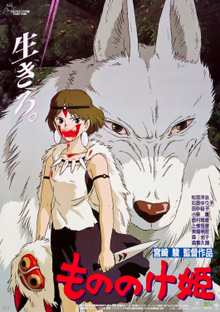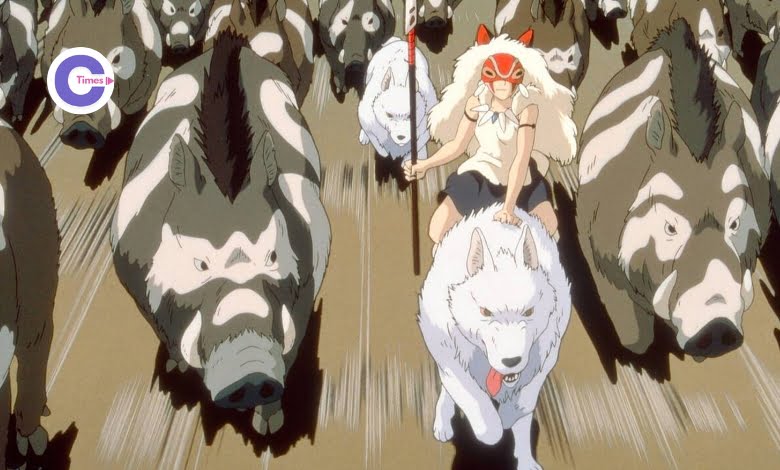It’s been 27 years since Princess Mononoke, the animated masterpiece by Hayao Miyazaki, was released. Originally released in 1997, it remains as powerful in the present as it did when it premiered, thrilling and engaging audiences with basic human emotions from all across the world.
It is full of such deep storytelling, vivid multidimensional characters, and beautiful animation that really showcases the genius of Miyazaki and the power of animated film. The article features the long-lasting heritage that “Princess Mononoke” exhibits in its themes, level of artistic brilliance out of Miyazaki’s studio, and cultural influence.

A Timeless Story: Nature, Conflict, and Humanity
The real story is about the delicate balance existing between nature and humanity. “Princess Mononoke” is situated in the late Muromachi period in Japan and trails Ashitaka, a young prince trapped between the gods of the forest and humans who consume its resources. This central conflict between industrial advancements and the environment brings out a state of tension and has a completely modern and significant setting in the world today.
He brings out the themes of conflict and co-existence in his work. In “Princess Mononoke,” the characters are not black and white but relatively complex beings with their own motivations and flaws. She leads Iron Town, destroying the place to keep a haven for socially outcast people, even if it destroys the forest. San, the titular Princess Mononoke, is the face of wild nature coming back at humans for defacing her home. Miyazaki uses these characters to ask questions about the grey areas between good and evil in human nature and the widening possibilities of reconciliation among worlds on opposite sides of the conflict.
Visual splendor: artistry in the Hayao Miyazaki tradition.
There is arguably no singular most impressive thing about “Princess Mononoke” other than its visual beauty. Executed to perfection, the blend between traditional hand-drawing techniques with digital technology creates a highly detailed and immersive world, drawing viewers into its fantastical setting. From the verdant, enigmatic forests populated by primaeval spirits to the industrialised Iron Town, each frame is a masterpiece of its own.

Character Complexity and Development
The characters developed within “Princess Mononoke” are by far its most striking feature of appeal. Where many animated movies create characters as stereotyped heroes and villains, Miyazaki constructs characters who are dynamic and gradual changes as the story moves.
Even Lady Eboshi and San come out as well-evolved characters. Lady Eboshi’s vision regarding Iron Town is concerned with a mix of progressive and destructive materialistic concerns; it embodies the dual aspect of human ambition. San’s loyalty to the forest and hatred toward humans reinforce the idea of animosities buried deep, steeping from environmental degradation.
All of these characters interact to further the plot and provide consideration for the ethical and philosophical questions that the film otherwise raises. Other characters involved include Moro, an ancient forest spirit with wisdom beyond understanding yet that remains shrouded in mystery for much of the film, and the monk Jigo, who serves to add definition to the ways in which the conflict is seen as a definitively compassionate conflict throughout the story.
Any given character involved is wracked with the resolution andor conflict of this main themes, therefore incorporating “Princess Mononoke” as a lush tapestry of combined narratives and moral quandaries.
Cultural Impact and Legacy
However since its very release, “Princess Mononoke ” has made a rather fundamental impact on the two majorities—the Japanese and global film culture. It was a massive commercial success in Japan, Hayao Miyazaki.The film helped boost Studio Ghibli’s reputation and by extension the international distribution of Miyazaki’s later films.
“Princess Mononoke ” received much critical acclaim for its story and theme. It has brought many awards and honours, which assured the film a status of an annotated classic. Influence from this film can be noted in the works of many leaders of new animated films and animators who have taken the name of Hayao Miyazaki as an inspiration.
Worldwide viewers and environmental activists share their attention and also interest to keenly highlight the environmental messages of “Princess Mononoke.” Although it is an animation film, it brought out clearly the global results of industrialization and the need to live in harmony with nature; its relevance to discussions about the environment and sustainability cannot be missed. Miyazaki’s vision inspired many to ponder over their relationship with the natural world and has them advocate for a more balanced and sustainable future.

Enduring Appeal: Why “Princess Mononoke” Still Captivates
Twenty-seven years after its initial release, “Princess Mononoke” remains as powerful as it was over audiences, carrying timeless themes, sublime animation, and intricately devised characters.
The way it approaches universal issues within the framework of an otherworldly plot is what makes the film so timeless and exciting for new generations of viewers. Miyazaki’s commitment to hand-drawn animation and his meticulous attention to detail create a visual experience that is both immersive and emotionally resonant. Landscapes, character designs, and fluid animation remain industry standards to the day.
Also, the philosophical and ethical questions flung in “Princess Mononoke” challenge audiences toward deeper reflections of their values and tenets. Its intellectual engagement, as much as its visual and emotional impact, ensures that “Princess Mononoke” shall be a lasting and pivotal work of art.
Hayao Miyazaki’s “Princess Mononoke” is no film—a classic roving the earth. It’s found its place uniquely within the pantheon of great cinema. As we celebrate the 27th anniversary of “Princess Mononoke,” it stands very much as a reminder for the eternal beauty and importance of animated storytelling. It is a movie that speaks toward our human experience, developed to create balance, understanding, and harmony within our relationship with nature and while interacting with one another.
